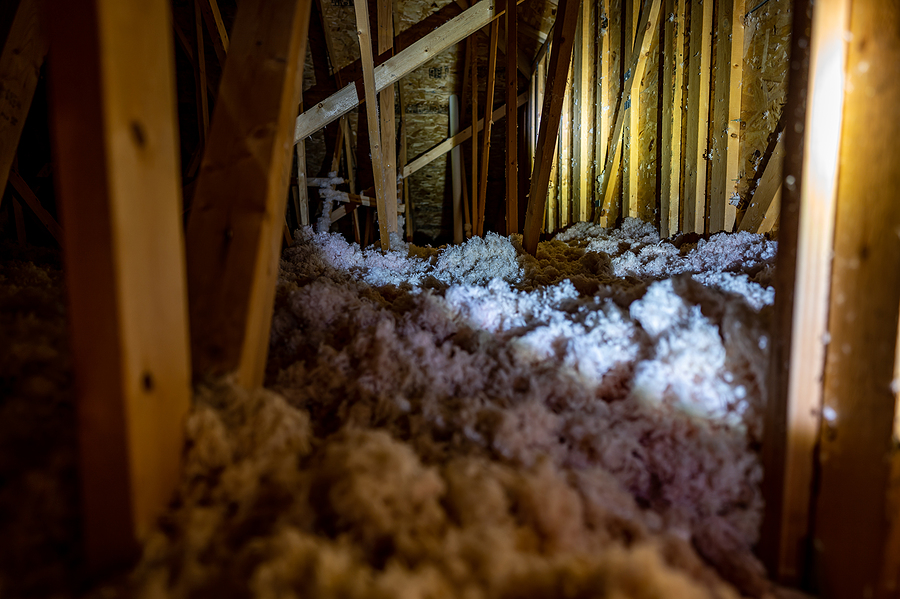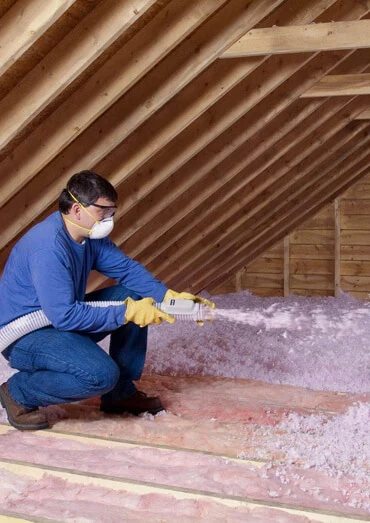Expert Tips for Enhancing Your Home with Attic Insulation DFW
Expert Tips for Enhancing Your Home with Attic Insulation DFW
Blog Article
Discover the Different Sorts Of Attic Insulation and Their Unique Advantages for Your Home's Power Effectiveness

Fiberglass Insulation
Fiberglass insulation is one of one of the most frequently utilized materials for attic room insulation as a result of its exceptional thermal efficiency and cost-effectiveness. Made up of tiny glass fibers, this material successfully traps air, developing a protecting obstacle that helps preserve regular interior temperatures. Its high R-value per inch makes it specifically efficient at withstanding warmth transfer, which is vital for power conservation in homes.
Setup of fiberglass insulation is reasonably simple, usually available in batts or loose-fill kinds, accommodating different attic room configurations. In addition, it is non-combustible and immune to moisture, reducing the danger of mold advancement. This toughness adds to its durability, making fiberglass a sensible long-lasting investment for homeowners.
In addition, fiberglass insulation is commonly produced from recycled materials, which boosts its eco-friendliness. The material can also add to soundproofing, lessening sound transfer in between spaces. While it is necessary to put on safety gear during installation to avoid irritation from the fibers, the overall benefits of fiberglass insulation, including energy cost savings and ecological factors to consider, make it a popular choice for enhancing attic efficiency and advertising a comfy living setting.
Spray Foam Insulation
Spray foam insulation is an extremely efficient choice for attic room insulation, understood for its remarkable air sealing and thermal performance. This ingenious insulation material is made up of a combination of isocyanate and polyol material, which, when integrated, broadens rapidly to fill voids and cavities in the attic room room. Its capability to stick to various surface areas makes certain a constant barrier versus air leakages, dramatically lowering warm loss during cooler months and warm gain during warmer seasons.
Among the crucial advantages of spray foam insulation is its high R-value per inch, which suggests it provides excellent thermal resistance in a reasonably slim application. This is particularly advantageous in attic rooms where area is often minimal. Furthermore, spray foam can aid reduce wetness buildup, decreasing the threat of mold and mildew and mold growth, which can be damaging to both the structure and interior air quality.
While the initial cost of spray foam insulation may be greater than typical choices, its long-term power cost savings, coupled with increased convenience and improved home worth, make it a worthwhile financial investment for house owners seeking enhanced energy performance. Attic Insulation DFW. Generally, spray foam insulation stands out as an effective remedy for optimizing attic room insulation
Cellulose Insulation

Cellulose insulation is a preferred selection for attic room insulation, mainly made up of recycled paper products treated with fire retardants. This eco-friendly alternative is recognized for its superb thermal efficiency, effectively lowering warm transfer in both summer and winter season. The dense make-up of cellulose allows it to load gaps and spaces in attic areas, offering a smooth barrier against air leaks.
Among the substantial benefits of cellulose insulation is its capacity to resist mold and mildew and pests, owing to the fire retardant therapies utilized throughout More hints manufacturing. Additionally, it flaunts a high R-value per inch, which equates into premium energy performance. Home owners can expect reduced home heating and cooling prices as a result of enhanced insulation.
Installation is typically achieved via blowing loose cellulose right into the wanted area, enabling a quick and reliable process. This method additionally decreases interruption to the existing structure. Cellulose insulation has a fairly reduced ecological effect, as its manufacturing procedure utilizes recycled materials, contributing to sustainable building methods.
Rock Woollen Insulation
Amongst the numerous alternatives for attic insulation, rock wool, likewise referred to as mineral woollen, sticks out as a result of its outstanding thermal and acoustic performance. Made from recycled or natural materials, rock wool is created by melting rock and spinning it into fibers, resulting in a product that provides excellent insulation residential properties.
Among the substantial benefits of rock woollen insulation is its high R-value, which suggests its effectiveness in resisting heat flow. This characteristic not just enhances energy efficiency but also contributes to keeping a comfy interior temperature year-round. Furthermore, rock wool is naturally fireproof, making it a much safer option for homes as it can withstand heats without melting or launching poisonous fumes.
In addition, rock woollen insulation succeeds in soundproofing capacities, properly reducing sound transmission between areas and from outdoors sources. This makes it an ideal choice for property owners looking for a tranquil living setting. Rock wool is moisture-resistant, helping to protect against mold and mildew development and preserving the structural honesty of the attic room. Generally, rock wool insulation offers a comprehensive option for enhancing power efficiency, security, and convenience in property setups.
Glowing Barrier Insulation
Radiant obstacle insulation functions as an effective remedy for lessening heat transfer in attic rooms, particularly in warmer climates. This kind of insulation jobs by reflecting induction heat away from living areas, therefore decreasing the quantity of warmth that gets in a home during warm climate - Attic Insulation DFW. Generally made up of a very reflective material, such as aluminum foil, radiant obstacles are set up in attic rooms, facing the roof, where they can obstruct inbound heat from the sun
The main benefit of radiant barrier insulation is its capability to lower air conditioning expenses. By mirroring warmth instead of absorbing it, glowing obstacles can aid keep an extra secure interior temperature, decreasing the work on cooling systems. This effectiveness converts into reduced power costs and boosted convenience for home owners.
Along with energy cost savings, glowing obstacles can likewise add to boosted indoor air top quality. By lowering warmth build-up, they aid decrease moisture degrees, which can protect against mold growth and improve total air flow. When set up properly, radiant barrier insulation can be an important addition to any type of energy-efficient home, making it pop over to this site a deserving factor to consider for property owners aiming to enhance their attic insulation technique.
Final Thought
In final thought, recognizing the numerous types of attic room insulation-- fiberglass, spray foam, cellulose, rock woollen, and glowing obstacles-- allows home owners to make informed decisions regarding energy efficiency. By picking the appropriate insulation product, substantial reductions in energy expenses can be accomplished, along with improvements in indoor comfort.

In final thought, comprehending the different types of attic insulation-- fiberglass, spray foam, cellulose, rock wool, and radiant barriers-- makes it possible for house owners to make enlightened choices relating to energy efficiency.
Report this page